
William Dobson was a portraitist and one of the first significant English painters, praised by his contemporary John Aubrey as "the most excellent painter that England has yet bred". He died relatively young and his final years were disrupted by the English Civil War.

Sir Anthony van Dyck was a Flemish Baroque artist who became the leading court painter in England after success in the Spanish Netherlands and Italy.

George Jamesone was a Scottish painter who is regarded as Scotland's first eminent portrait-painter.
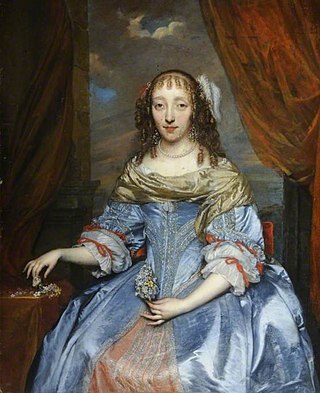
Gonzales Coques was a Flemish painter of portraits and history paintings. Because of his artistic proximity to and emulation with Anthony van Dyck he received the nickname de kleine van Dyck. Coques also worked as an art dealer.

The Vendramin Family Venerating a Relic of the True Cross is a large painting by the 16th century Venetian master Titian and his workshop, executed in the early 1540s, and now in the National Gallery in London.

Adriaen Hanneman was a Dutch Golden Age painter best known for his portraits of the exiled British royal court. His style was strongly influenced by his contemporary, Anthony van Dyck.

Isabella Brant was the first wife of the Flemish painter Peter Paul Rubens, who painted several portraits of her.
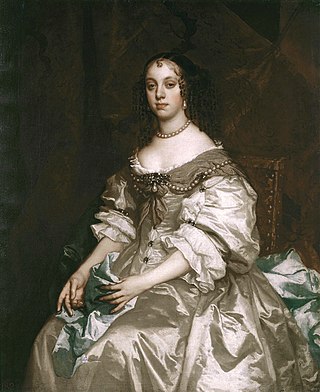
The title of Principal Painter in Ordinary to the King or Queen of England or, later, Great Britain, was awarded to a number of artists, nearly all mainly portraitists. It was different from the role of Serjeant Painter, and similar to the earlier role of "King's Painter". Other painters, for example Nicholas Hilliard had similar roles with different titles. "Principal Painter in Ordinary", first used for Sir Anthony Van Dyck, became settled as the usual title with John Riley in 1689.
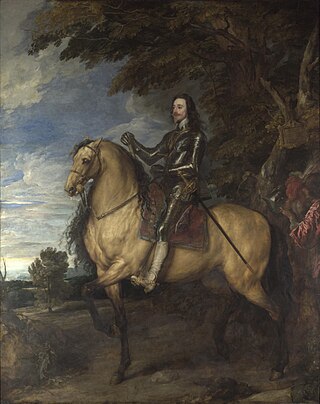
The Equestrian Portrait of Charles I is a large oil painting on canvas by Anthony van Dyck, showing Charles I on horseback. Charles I had become King of England, Scotland and Ireland in 1625 on the death of his father James I, and Van Dyck became Charles's Principal Painter in Ordinary in 1632.

A Man with a Quilted Sleeve is a painting of about 1510 by the Venetian painter Titian in the National Gallery, London, measuring 81.2 by 66.3 centimetres. Though the quality of the painting has always been praised, there has been much discussion as to the identity of the sitter. It was long thought to be a portrait of Ariosto, then a self-portrait, but in 2017 is called Portrait of Gerolamo (?) Barbarigo by the gallery, having also been called merely Portrait of a Man, the title used here, The Man with the Blue Sleeve, and no doubt other variants.

Charles I with M. de St Antoine is an oil painting on canvas by the Flemish painter Anthony van Dyck, depicting Charles I on horseback, accompanied by his riding master, Pierre Antoine Bourdon, Seigneur de St Antoine.

Charles I in Three Positions, also known as the Triple Portrait of Charles I, is an oil painting of Charles I of England painted 1635–1636 by the Flemish artist Sir Anthony van Dyck, showing the king from three viewpoints: left full profile, face on, and right three-quarter profile. It is currently part of the Royal Collection.
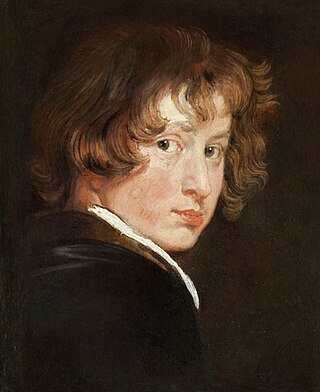
The Self-portrait of 1613–1614 is the first surviving self-portrait by the Flemish artist Anthony van Dyck, showing him aged about fifteen. At that date he was still working for Hendrick van Balen but was about to join Peter Paul Rubens's studio. Self-portraiture was a typical artform in the Northern Renaissance and had already been used by Rubens and Jan van Eyck.
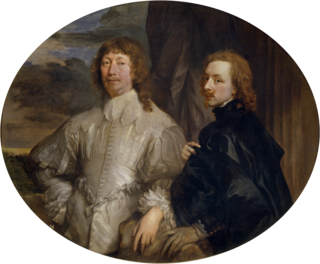
Self-portrait with Sir Endymion Porter is a self-portrait by Anthony van Dyck, showing him with his patron Sir Endymion Porter.

Self-Portrait with a Sunflower is a self-portrait by Anthony van Dyck, a Flemish Baroque artist from Antwerp, then in the Spanish Netherlands. The oil on canvas painting is generally between 1632 and 1633. His successful ventures in the Spanish Netherlands and Italy propelled van Dyck into a career as court painter. Van Dyck was serving as "principal Paynter in order to their Majesties" at the court of Charles I of England when he created this self-portrait. The symbolism behind the sunflower and gold chain have been a point of contention amongst various art historians. Van Dyck's dedication to capturing the likeness of his models was the basis for his strong influence over the art of portraiture long after his death in 1641. His portrait technique evolved into what is referred to as his Late English period as seen in Self-Portrait with a Sunflower. This work is now in the private collection of the Duke of Westminster, housed at Eaton Hall in Cheshire.

The Self-portrait is an oil on canvas painting by the Flemish artist Anthony van Dyck. It is held at the Metropolitan Museum of Art, in New York. The work depicts its creator during his early twenties.

Portrait of Mary Hill, Lady Killgrew is a 1638 Baroque portrait by the Flemish artist Anthony van Dyck. The portrait is twinned with another of the Lady's husband, William Killigrew.

Lord John Stuart and His Brother, Lord Bernard Stuart is a large oil painting by Anthony van Dyck, executed c. 1638. The life-size double portrait depicts the two youngest sons of Esmé Stewart, 3rd Duke of Lennox: Lord John Stewart (1621–1644) and Lord Bernard Stuart (1622–1645), aged about 17 and 16 respectively. The painting measures 237.5 cm × 146.1 cm, and has been in the collection of the National Gallery, London, since 1988.

The Lomellini Family is a portrait painting by the Flemish Baroque painter Anthony van Dyck. A group portrait of a landed Genoese family, it is in the Scottish National Gallery in Edinburgh.

Margaret Lemon was an English artist's model. She was the most painted female commoner of the seventeenth century, and she was the partner of Anthony van Dyck.



















